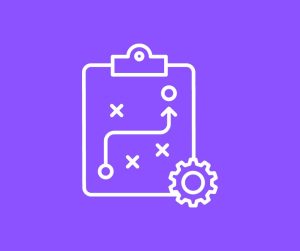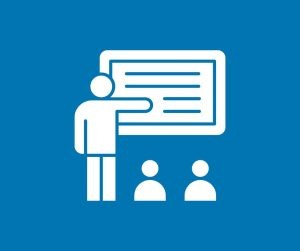Writer
Muhammad Arif Hossain – Business Development Manager and Creative Writer
In today’s fast-paced corporate landscape, fostering employee growth and development is not just a business strategy; it’s a necessity. Companies that prioritize the professional development of their workforce not only attract top talent but also cultivate a culture of innovation and resilience. This piece of article will guide you through the essential strategies that your company can adopt to ensure continuous employee growth and development.
Comprehensive Training Programs

One of the central component of employee development is a well-structured training program. Investing in comprehensive training not only equips employees with the skills they need but also boosts their confidence and job satisfaction. A study by the American Society for Training and Development found that companies that invest $1,500 per employee on training and development see an average of 24% higher profit margins than those who invest less.
For instance, Google’s “Google U” program provides employees with a variety of courses, ranging from technical skills to personal development. This commitment to continuous learning has contributed to Google’s reputation as an industry leader in talent development.
Mentorship Programs

Implementing mentorship programs can significantly enhance employee career growth. According to a survey by Deloitte, 71% of Fortune 500 companies offer mentorship programs to their employees. These programs create a supportive environment for skill development, career guidance, and knowledge transfer.
IBM, for example, has a robust mentorship program that pairs experienced employees with those seeking guidance. This has not only improved the mentees’ skills but also increased overall employee retention.
Individual Development Plans

Customizing development plans to individual needs is crucial for addressing specific skill gaps and career aspirations. Encourage employees to create personal development plans in collaboration with their managers. This approach ensures that the growth initiatives align with both organizational goals and individual ambitions.
At Microsoft, employees engage in regular discussions with their managers to create Individual Development Plans (IDPs). This empowers employees to take ownership of their career paths and ensures that the company’s objectives are met.
Performance Feedback and Reviews

Regular performance feedback is vital for employee growth. Constructive feedback helps employees understand their strengths and areas for improvement, facilitating a continuous learning mindset. According to a Gallup study, employees who receive regular feedback are 12.5% more productive than those who don’t.
Salesforce, a global leader in customer relationship management, adopts a continuous feedback model. Managers provide ongoing feedback, fostering a culture of improvement and development that permeates the entire organization.
Encouraging Cross-Functional Exposure

Exposure to different roles and departments can broaden employees’ skill sets and perspectives. Encourage cross-functional collaboration and provide opportunities for employees to work on projects outside their usual scope. This not only enhances their skills but also contributes to a more versatile and adaptable workforce.
An exemplary case is Procter & Gamble (P&G), which encourages employees to work in various functions. This cross-functional exposure has been instrumental in P&G’s ability to innovate and adapt to changing market dynamics.
Investing in Continuing Education

Supporting employees in pursuing further education or certifications demonstrates a commitment to their long-term growth. According to a report by the World Economic Forum, 94% of employees would stay at a company longer if it invested in their career development.
Amazon, a global e-commerce giant, offers a program called Career Choice, where it pre-pays up to 95% of tuition and fees for employees pursuing in-demand fields, even if those skills are not directly related to their current roles. This initiative not only benefits individual employees but also enhances the overall talent pool within the organization.
Recognition and Rewards

Acknowledging and rewarding employees for their achievements is a powerful motivator for growth. Recognition programs not only boost morale but also foster a positive work environment. According to a survey by Globoforce, 69% of employees would work harder if they felt their efforts were better recognized.
Companies like Adobe have implemented recognition programs, where employees can give and receive recognition from peers and managers. This contributes to a culture of appreciation and fuels continuous efforts towards personal and professional development.
Flexible Work Arrangements

Recognizing the importance of work-life balance and personal well-being is crucial for employee development. Offering flexible work arrangements, such as remote work options or flexible hours, allows employees to better manage their professional and personal responsibilities. A study by Harvard Business Review found that companies with flexible work policies experience lower turnover rates and higher employee satisfaction.
For instance, companies like Shopify have embraced a remote-first approach, allowing employees to work from anywhere. This flexibility not only supports employee growth by promoting a healthy work-life balance but also attracts diverse talent from around the world.
Employee Resource Groups (ERGs)

Establishing Employee Resource Groups (ERGs) creates communities within the organization where employees with shared interests, backgrounds, or goals can collaborate and support each other. ERGs foster inclusivity, provide networking opportunities, and contribute to the personal and professional development of their members.
A notable example is IBM’s Global Women’s Executive Committee, which focuses on the advancement and development of women leaders within the company. ERGs like these not only empower employees but also contribute to a more diverse and inclusive corporate culture.
Wellness Programs

Employee well-being is integral to their overall growth and performance. Implementing wellness programs that focus on physical, mental, and emotional health can contribute to a healthier and more engaged workforce. According to a study by the International Foundation of Employee Benefit Plans, 77% of employers believe that wellness programs positively impact employee productivity and performance.
Companies like Johnson & Johnson have embraced comprehensive wellness programs, providing resources and activities that support employees in maintaining a healthy lifestyle. By prioritizing employee well-being, companies can create an environment that fosters growth both personally and professionally.
Conclusion
In conclusion, fostering employee growth and development is a multifaceted endeavor that requires a holistic approach. From comprehensive training programs to individualized development plans and continuous feedback, each strategy plays a vital role in shaping a workforce that is not only skilled but also motivated to contribute to the company’s success.
By investing in these initiatives, your company can create an environment where employees thrive, leading to increased productivity, higher retention rates, and a competitive edge in the ever-evolving business landscape. Remember, a company’s greatest asset is its people, and by prioritizing their growth, you’re not just investing in individuals; you’re investing in the future success of your organization.




